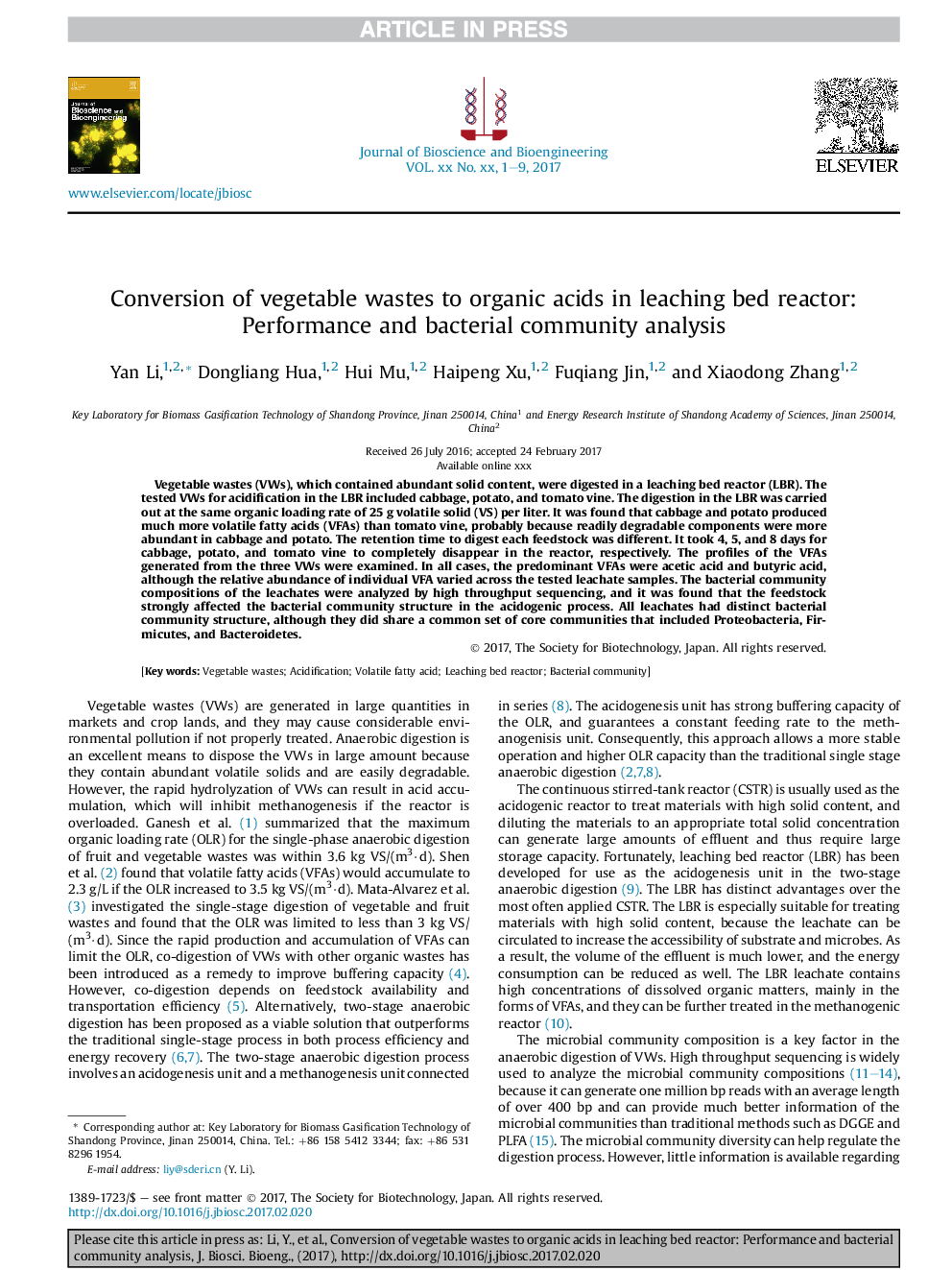| کد مقاله | کد نشریه | سال انتشار | مقاله انگلیسی | نسخه تمام متن |
|---|---|---|---|---|
| 4753289 | 1416551 | 2017 | 9 صفحه PDF | دانلود رایگان |
عنوان انگلیسی مقاله ISI
Conversion of vegetable wastes to organic acids in leaching bed reactor: Performance and bacterial community analysis
ترجمه فارسی عنوان
تبدیل ضایعات گیاهی به اسیدهای آلی در رآکتور رطوبت: تجزیه و تحلیل عملکرد و تجزیه و تحلیل جامعه باکتری
دانلود مقاله + سفارش ترجمه
دانلود مقاله ISI انگلیسی
رایگان برای ایرانیان
کلمات کلیدی
زباله های گیاهی اسیدی شدن، اسید چرب فرار، رطوبت رطوبت، جامعه باکتریایی،
موضوعات مرتبط
مهندسی و علوم پایه
مهندسی شیمی
بیو مهندسی (مهندسی زیستی)
چکیده انگلیسی
Vegetable wastes (VWs), which contained abundant solid content, were digested in a leaching bed reactor (LBR). The tested VWs for acidification in the LBR included cabbage, potato, and tomato vine. The digestion in the LBR was carried out at the same organic loading rate of 25Â g volatile solid (VS) per liter. It was found that cabbage and potato produced much more volatile fatty acids (VFAs) than tomato vine, probably because readily degradable components were more abundant in cabbage and potato. The retention time to digest each feedstock was different. It took 4, 5, and 8 days for cabbage, potato, and tomato vine to completely disappear in the reactor, respectively. The profiles of the VFAs generated from the three VWs were examined. In all cases, the predominant VFAs were acetic acid and butyric acid, although the relative abundance of individual VFA varied across the tested leachate samples. The bacterial community compositions of the leachates were analyzed by high throughput sequencing, and it was found that the feedstock strongly affected the bacterial community structure in the acidogenic process. All leachates had distinct bacterial community structure, although they did share a common set of core communities that included Proteobacteria, Firmicutes, and Bacteroidetes.
ناشر
Database: Elsevier - ScienceDirect (ساینس دایرکت)
Journal: Journal of Bioscience and Bioengineering - Volume 124, Issue 2, August 2017, Pages 195-203
Journal: Journal of Bioscience and Bioengineering - Volume 124, Issue 2, August 2017, Pages 195-203
نویسندگان
Yan Li, Dongliang Hua, Hui Mu, Haipeng Xu, Fuqiang Jin, Xiaodong Zhang,
